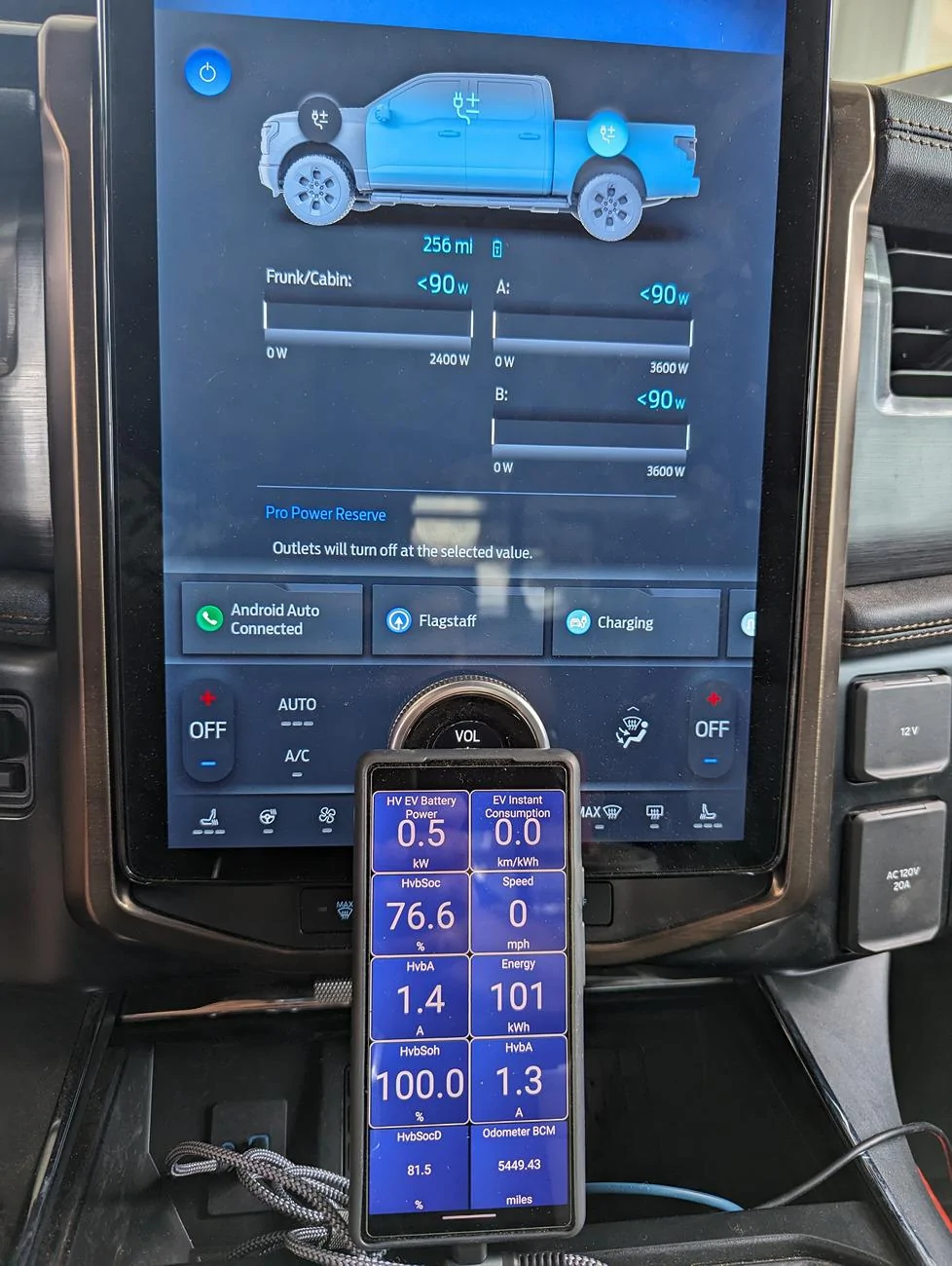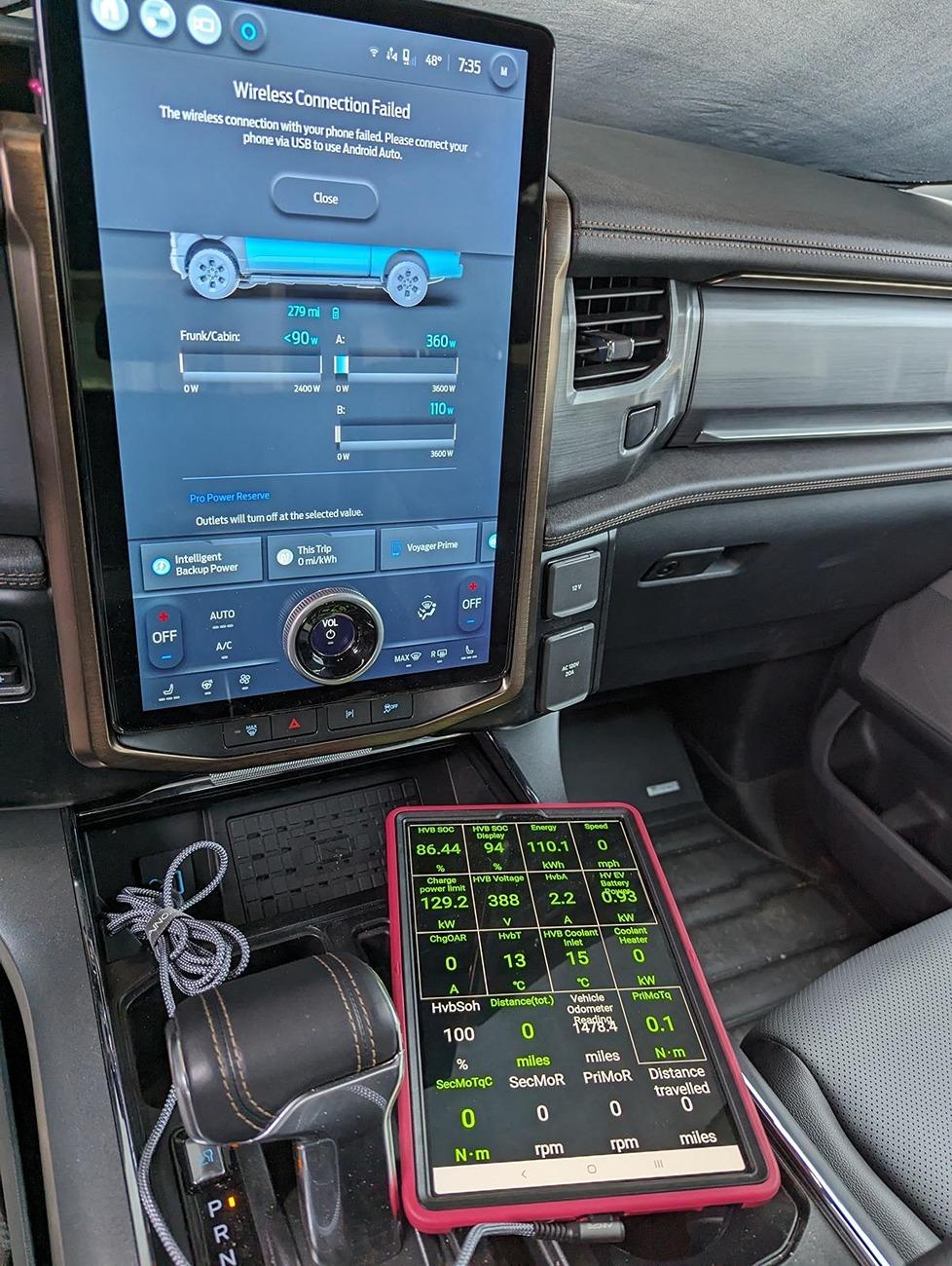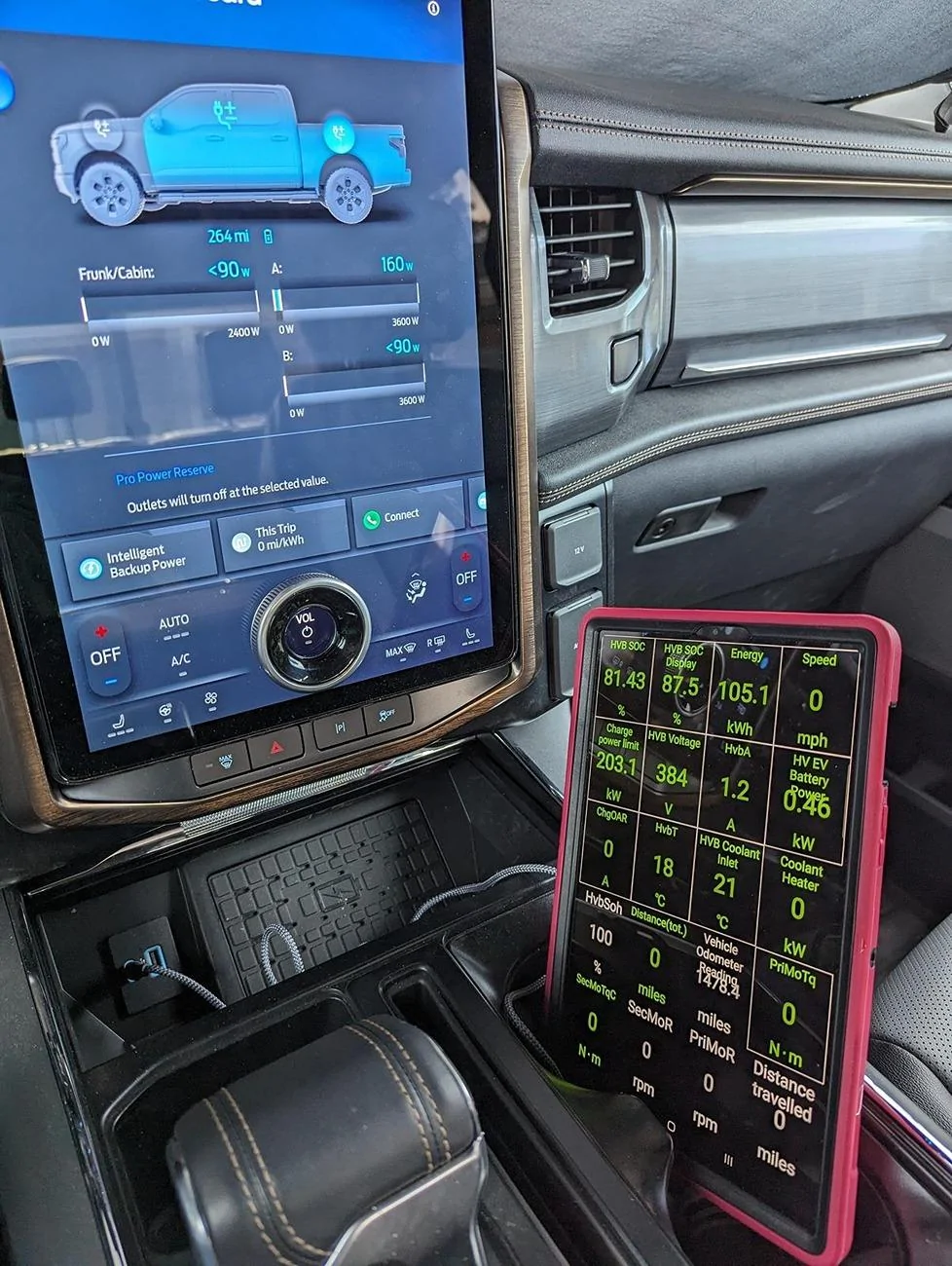BeeKind
Well-known member
- First Name
- Jim
- Joined
- Mar 1, 2024
- Threads
- 4
- Messages
- 86
- Reaction score
- 106
- Location
- Long Island, NY
- Vehicles
- '23 F150 Lightning, '23 Ioniq 5
- Thread starter
- #17
I'm confident there were losses, once, I wasn't expecting from the load that was being put to the truck. I saw someone else express noticing something similar and felt confident about this post.
Why that happened I'm less confident than when I started the thread.
I need to play more. If I don't notice the same thing again I'm far less concerned.
I do think every circuit should be accessible from the exterior. Like, big believer in that. Should be able to lock the truck securely while using all circuits in all weather conditions.
Why that happened I'm less confident than when I started the thread.
I need to play more. If I don't notice the same thing again I'm far less concerned.
I do think every circuit should be accessible from the exterior. Like, big believer in that. Should be able to lock the truck securely while using all circuits in all weather conditions.
Sponsored




